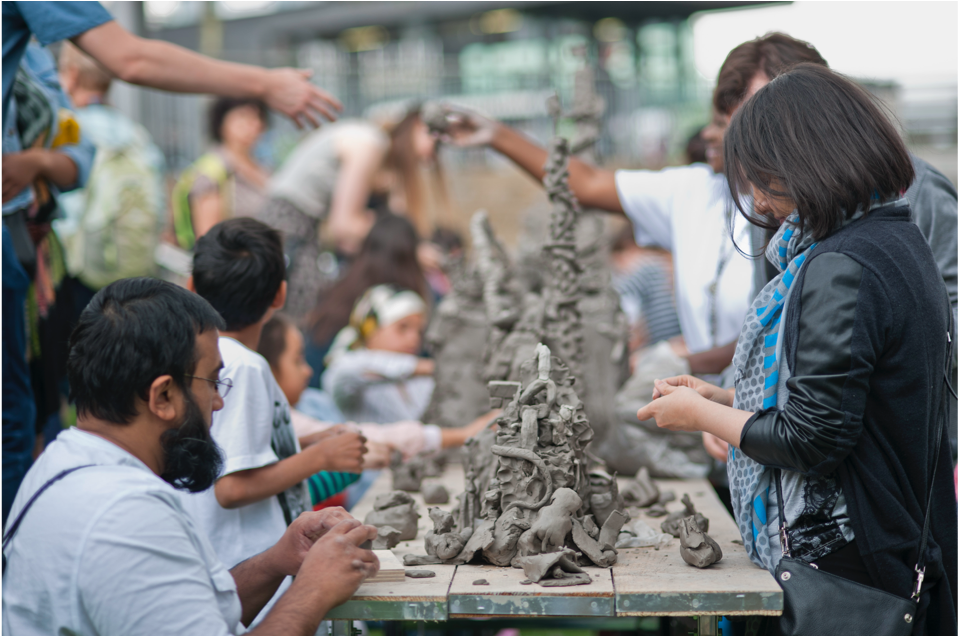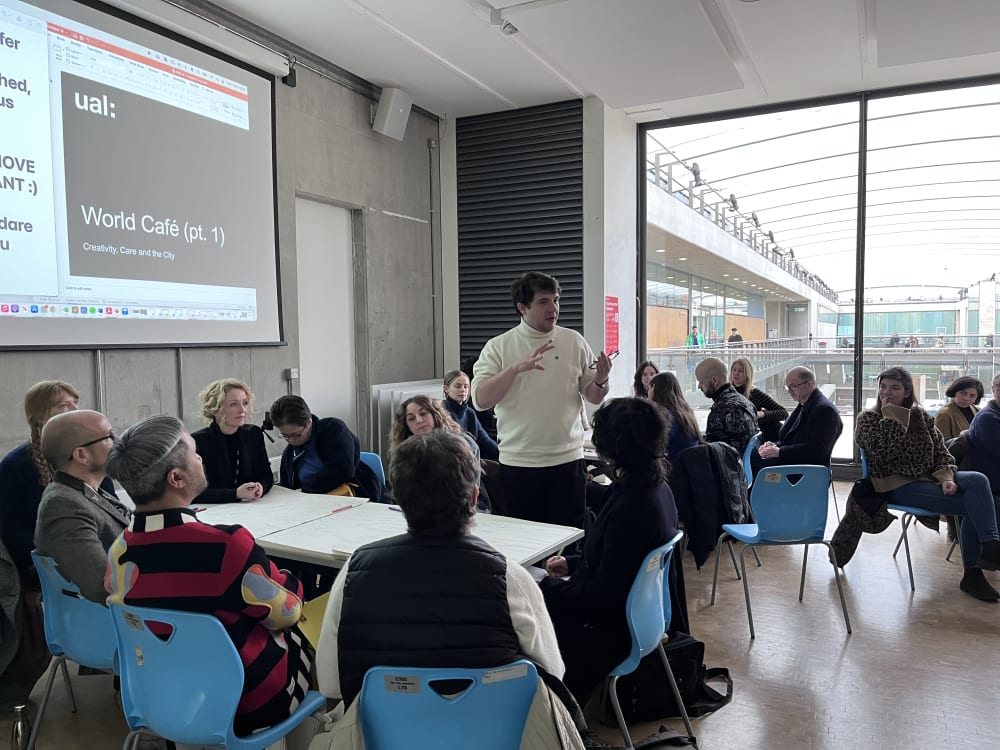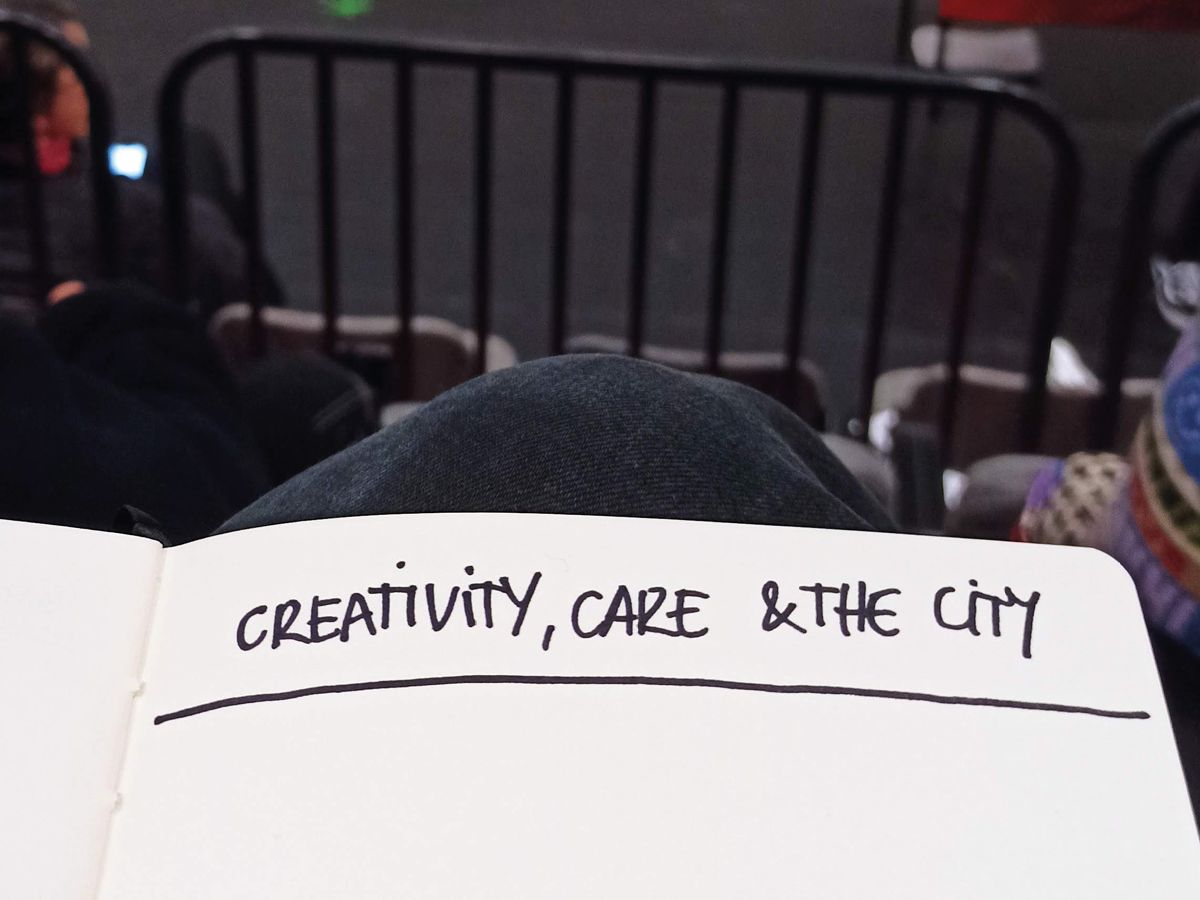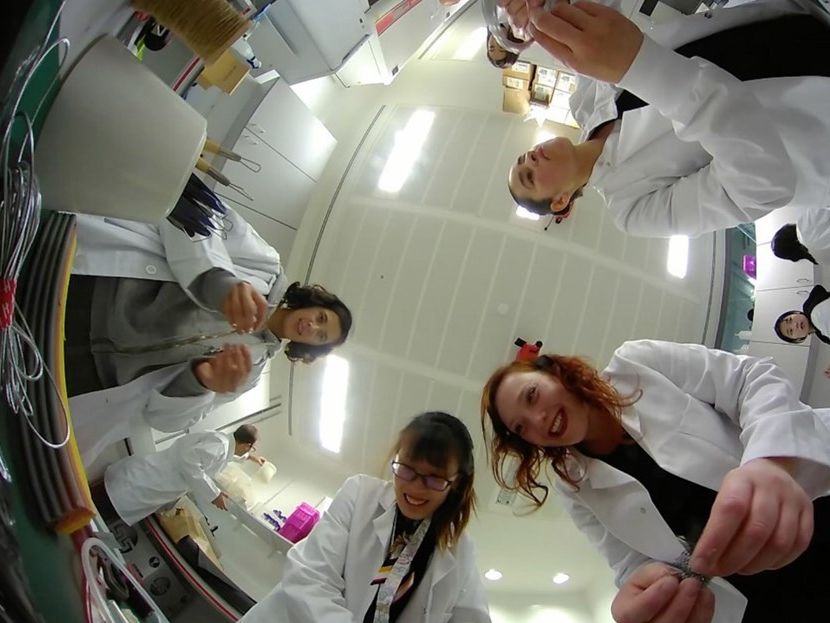
What we learned from Creativity, Care and the City – part 2

- Written byAnnika Loebig
- Published date 13 March 2023

Following the first iteration of Creativity, Care and the City in January 2023, this second instalment took place at Central Saint Martins on 1 March.
Convened by Kate Keara Pelen, a diverse set of speakers, community organisers and guests were invited to explore the relationship between creative practice, wellbeing and health in urban contexts.
Participants got to engage with topics such as tackling loneliness in the city, how we can reframe and normalise neurodiversity so all students can thrive, the healing power of art in community workshops and so much more.
Speakers included:
- Debbie Anzalone, lecturer at the Royal College of Art and University of Arts London: How can we connect with each other more authentically?
- Chrissy Levett from Creative Conscience: Building creative environmental or social impact projects
- R.M. (Marcelo) Sánchez-Camus from Applied Live Art Studio: How can the arts bring care both into large-scale community works, and into the museum setting?
- Shana Tufail, MBA Central Saint Martins and Birkbeck University: Reframing and normalising neurodiversity
- Katherine Thornton from World Cities Culture Forum: Transforming loneliness: culture and the public realm
- Anne-Marie Creamer and Alex Schady: Introducing HEARD Network (Health, Arts and Design Research) & Making Better, a new Social Prescribing Hub within Central Saint Martins
- Piers Roberts from Riskkit: Introducing Trinary: Patterns in Non-Linear space – a simple framework to help us navigate uncertainty, embrace change and bring ambitious projects to life
- Lucy Chapman, interdisciplinary artist, teacher, and Dyslexia & Inclusion Specialist: Bill of Health: Looking at the human cost of health care and who deserves to receive it
- Duncan Hooson, Reader in Knowledge Exchange, socially engaged ceramics: Creative Comfort / UCL Hospital Collaborations – working with clay to co-design and co-create with publics
Each set of presentations was followed by World Cafés: breakouts in which participant groups had the chance to reflect on the speaker’s presentations and central arguments. At the end of the afternoon, the event finally concluded with a workshop facilitated by R.M. Sánchez-Camus to draft a care pledge together, which will be made publicly available.
We caught up with Lucy Chapman, interdisciplinary artist, teacher, and Dyslexia & Inclusion Specialist and current MA Art & Science student at Central Saint Martins, and R.M (Marcelo) Sánchez-Camus, Director of Applied Live Art Studio and creator of UAL’s Short Course Health and Wellbeing Through Artmaking, to reflect on the event:

Hi both! Could you start by telling us why you think it’s important to look at the intersection of health and the arts in an urban context?
Lucy Chapman: I think everyone reading this in UAL will relate to the idea that having a creative practice helps you to process your life experiences - and this is particularly relevant when those experiences are challenging, such as living with mental health, neurodiversity, addiction and disability.
There is so much evidence that creativity improves health outcomes. But for me the essence is that creative practice puts the tools into the hands of the people themselves - in this way it is incredibly empowering - particularly for communities that are often disempowered and marginalised. This is particularly relevant now with the cost-of-living crisis and the crisis in healthcare.
R.M (Marcelo) Sánchez-Camus: A really important impact of our busy lives in urban environments is disassociation. This happens between us as individuals, it happens between us and our life goals, and it happens between us and our own sense of self. This has a massive impact on our wellbeing.
The arts are a vehicle of communication that can reassociate our subconscious thinking and inner workings with our conscious thinking and outer workings. This leads to a deeper realisation of ourselves and of each other. This can lead to increased harmony, solidarity, empathy and a general sense of purpose to serve and thrive rather than take and survive.

Could you tell us about an element of the event that particularly stuck with you and why?
Lucy: I really appreciated how marginalised voices were centred in many of the speaker’s work - I think we can go further with this at UAL - but I loved the ambition!
Marcelo: The event was an opportunity to see a cross section of artists, researchers and academics all working in very different ways towards a higher common goal of care and creativity. This really resonated with me as it showcased talent, promoted new ways of thinking and seeing, and helped inspire our own work to grow and continue.
Could you tell us about one lesson from Creativity, Care and the City that you wish you could share with people who weren’t able to attend?
Lucy: It was very meaningful to be in a room full of people who care deeply about using creativity to improve health and wellbeing. The approaches we used were varied but we all had a common goal - to enrich and improve health through creativity. I found this inspiring and validating.
Marcelo: We collectively developed a Creativity and Care Pledge at the end of the session. This was a deeply intense thinking space with an endless well of compassion and empathy that was palpable.
The lesson really taught us that as important as these moments are to come together, we have to collectively promise to keep the good work going and share that promise with others. It made me personally realise that a pledge can start with an individual and then be shared by a group of people, then by an organisation, then by a network of organisations and this can mark systemic change in the way we live our everyday lives.
Any final thoughts?
Lucy: There were so many ideas - I’m still processing it all! Thanks to Kate Keara Pelen and the team for curating such a thought-provoking afternoon.
Marcelo: I have been really inspired teaching my Short Course Health & Wellbeing Through Artmaking over the last 3 years. I started this course because I realised that there was a real interest out there from everyday people to bring more creativity and wellbeing into their lives and not enough spaces for training them up.
I see the intersection of creativity and care not as a topic to research but as a movement of practice, an antidote to the times we live in and a proactive tool in social healing.

